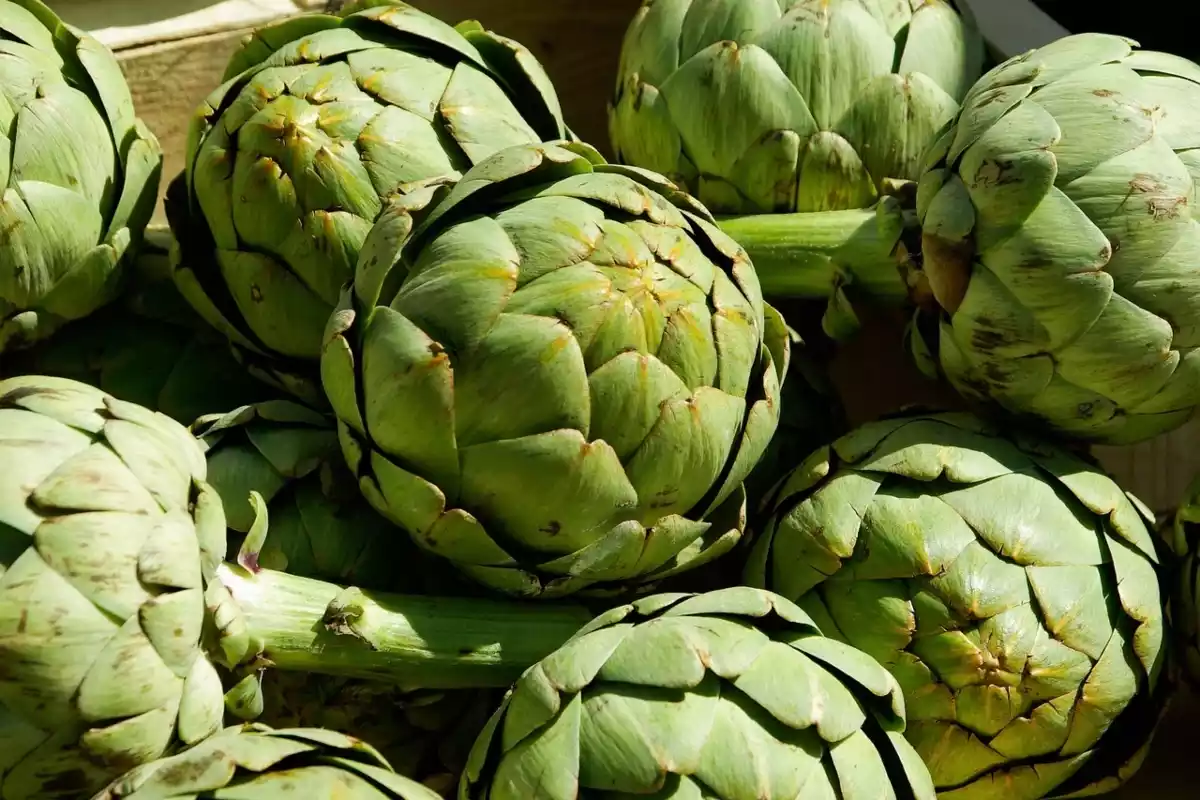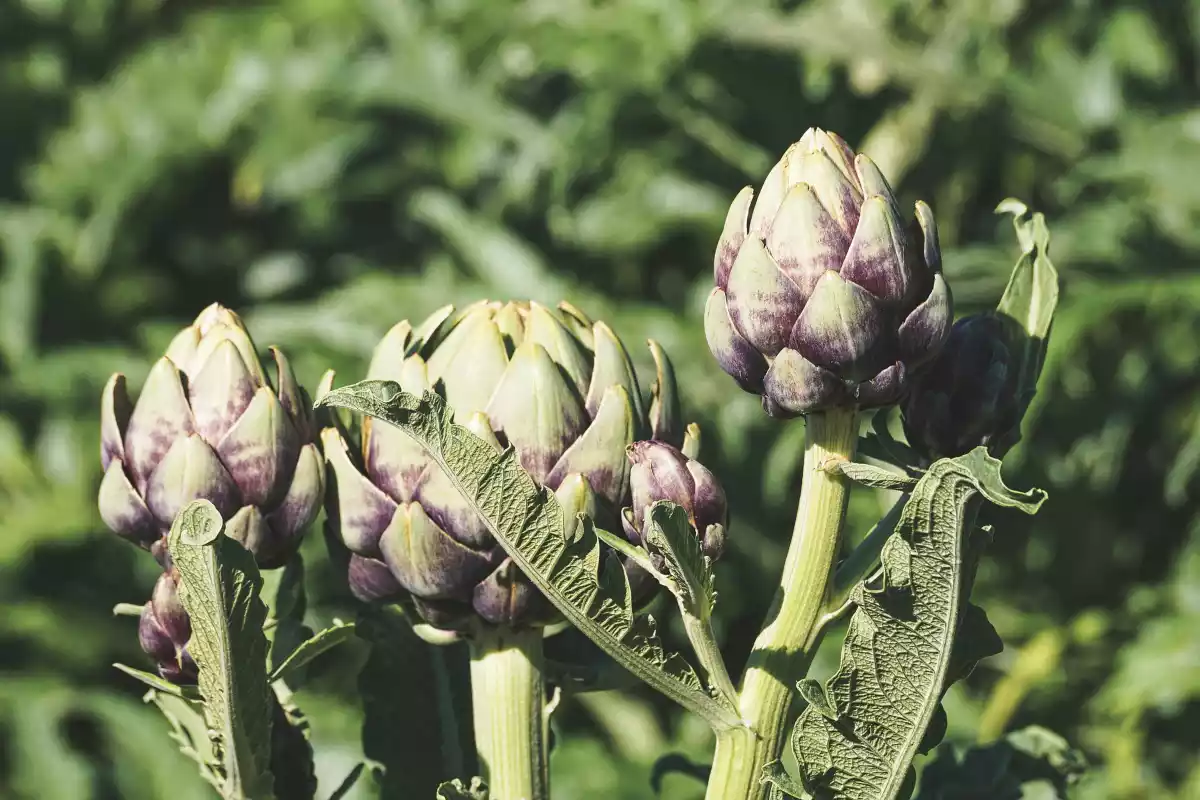Artichokes are a versatile food and, although some consider them a vegetable, they are actually a variety of thistle. For nutritional purposes, they are consumed because of their benefits associated with strengthening the immune system, lowering cholesterol, and protecting against diseases such as diabetes, atherosclerosis, heart attack, and stroke. Artichokes are one of the basic ingredients in our diet and we can consume them in many different ways. For that reason, in this article, we tell you how to cook them, what recipes you can prepare with them and what are the benefits for our organism.
Artichoke benefits
Artichokes are native to the Mediterranean and are part of its diet in the spring season. The edible part of this vegetable is the bud inside the head of the flower before it blooms completely. The weather is key in cultivating them, as they become hard and almost inedible once the flower has bloomed.
Moreover, one of the parts most requested by its consumers is the artichoke heart, which is the base from which the leaves sprout. It is usually considered the most delicious part of the artichoke and is generally the most expensive. This plant has associated health benefits.
1. Source of nutrients
They are a powerful source of nutrients. They are low in fat and rich in fiber, vitamins, minerals, and antioxidants. They have only 60 calories per medium piece and about 4 grams of protein, above the average of plant origin foods. Furthermore, they are rich in antioxidants.
2. Lowers bad cholesterol and raises the good one
Artichoke leaf extract can have a positive effect on cholesterol levels. Through regular consumption of this vegetable, LDL (bad) cholesterol can be lowered and HDL (good) cholesterol can be raised. On the other hand, they contain luteolin, an antioxidant that prevents the formation of cholesterol. Also, artichoke leaf extract makes the body process cholesterol more efficiently, resulting in lower overall cholesterol levels.
3. Helps regulate blood pressure
Artichoke extract may help people with high blood pressure. Regular consumption of this vegetable has been shown to reduce blood pressure. Moreover, they are a good source of potassium, which helps regulate blood pressure. However, it is not clear whether consumption of whole artichokes provides the same benefits, as the extract of this thistle used in these studies is highly concentrated.
4. Beneficial for the liver
Artichoke leaf extract can protect the liver and promote new tissue growth. It also increases bile production, which helps eliminate harmful toxins from the liver.
5. Promotes digestion
Artichokes are a great source of fiber that can help keep the digestive system healthy by promoting beneficial intestinal bacteria, reducing the risk of certain intestinal cancers, and relieving constipation and diarrhea.
They also contain inulin, a type of fiber that acts as a prebiotic. Artichoke extract may also relieve symptoms of indigestion, such as bloating, nausea, and heartburn. Finally, they also contain kinin, a natural compound that can cause positive effects by stimulating the production of bile, accelerating the intestinal movement, and improving the digestion of certain fats.
6. Relieves the symptoms of irritable bowel syndrome
Irritable bowel syndrome is a condition that affects the digestive system and can cause stomach pain, cramps, diarrhea, bloating, constipation, and flatulence. In studies, daily consumption of this vegetable's leaf extract has been shown to help relieve symptoms. Some compounds in artichokes have antispasmodic properties. This means they can help stop the muscle spasms common in irritable bowel syndrome, balance intestinal bacteria, and reduce inflammation.
7. Helps lower blood sugar
Another of the leaf extract benefits is that they can help reduce blood sugar levels. Artichoke extract slows the activity of alpha-glucosidase, an enzyme that breaks down starch into glucose, which could affect blood sugar levels.
8. Cancer research
Studies in animals and test tubes indicate that artichoke extract may slow the growth of cancer cells. Certain antioxidants, such as rutin, quercetin, silymarin, and gallic acid, present in artichokes are thought to be responsible for these anticancer effects. For example, silymarin has been shown to help prevent and treat skin cancer in animal studies and test tubes. Despite these promising results, there are no human studies and more research is needed.
4 artichoke recipes
Although it can seem overwhelming, preparing and cooking artichokes and adding them to our diet is an easy task. We can prepare them in an infinite number of ways, such as steaming, boiling, roasting or sautéing them. Also, another way to cook artichokes is to prepare them stuffed or battered, adding spices and other condiments for an extra burst of flavor.
Steaming is one of the most popular methods on how to cook artichokes and generally takes 20 to 40 minutes to cook, depending on size. As an alternative to steaming, we can roast them for 40 minutes at 170°C. We have to keep in mind that both leaves and heart can be eaten.
Once cooked, the outer leaves are extracted and can be eaten directly or dipped in a sauce. Once we have eaten the leaves, we can eat the heart alone or add it to a salad or even to a pizza. Another way to taste them is by making an artichoke omelet or cream, along with other vegetables. Below are some easy ways to cook artichokes:

1. Roasted artichokes
This is a delicious recipe that can be served as a main course, as a starter or appetizer. To prepare them we need 12 artichokes, 1 lemon, extra virgin olive oil, and salt. First, wash the artichokes and cut the stem and a little base with a knife. In this way, we get them to stand up easily. Also, cut the top and press a little to open them.
We put them in an oven tray and on top, we add a little lemon juice, extra virgin olive oil, and salt. We can also add pepper if we like. Preheat the oven to 180ºC and put the artichokes in for 40 minutes. Once this time has passed, take them out and serve.
2. Grilled artichokes
Another easy and quick way to prepare this thistle is to grill them. To make this recipe we need 12 medium fresh and tender artichokes, 1 lemon, extra virgin olive oil, pepper, and salt. If they are small and tender, we will simply have to wash and dry them. Remove the hardest leaves and cut them in half.
Then we rub them with lemon and put them on the grill with a little oil. Brown them on both sides until they are cooked. When serving, add some grains of coarse salt and a little ground pepper. On the other hand, if the artichokes that we have bought are big and hard, first we will have to cook them a few minutes.
The best thing is to steam them for a few minutes and then remove the hardest leaves, cut them in half and let them drain until they dry. Finally, put them on the grill with a little oil and brown them on both sides. Serve them with coarse salt and pepper.
3. Steamed artichokes
As we have said before, this way of cooking this thistle is one of the most popular. To cook them we need 2 whole artichokes, extra virgin olive oil, salt, and pepper to taste. Fill the bottom of a steamer with water and let it boil over high heat. Meanwhile, cut the stems and tips of the artichoke leaves.
Pour a little olive oil over the artichokes. When the water starts to boil, place the steamer and add the artichokes in it. Cover and let them steam for 20 minutes or until they are very soft. Serve with salt and pepper.
4. Artichokes with ham
This is a very popular recipe both for its simplicity of preparation and for how tasty it is. To prepare it we need 4 large artichokes, 150 g of sliced ham, 2 cloves of garlic, extra virgin olive oil, and black pepper.
We start by cleaning the artichokes, removing the hard leaves and the stem. Then we wash and split them. Add a little lemon juice and add them to a pot of boiling water. Cook for 10 minutes and drain. In a frying pan, fry the split garlic and add the drained artichokes and ham. Fry everything for a couple of minutes and add the pepper.
- This article about "The Artichoke" was originally published in Spanish in Viviendo La Salud

